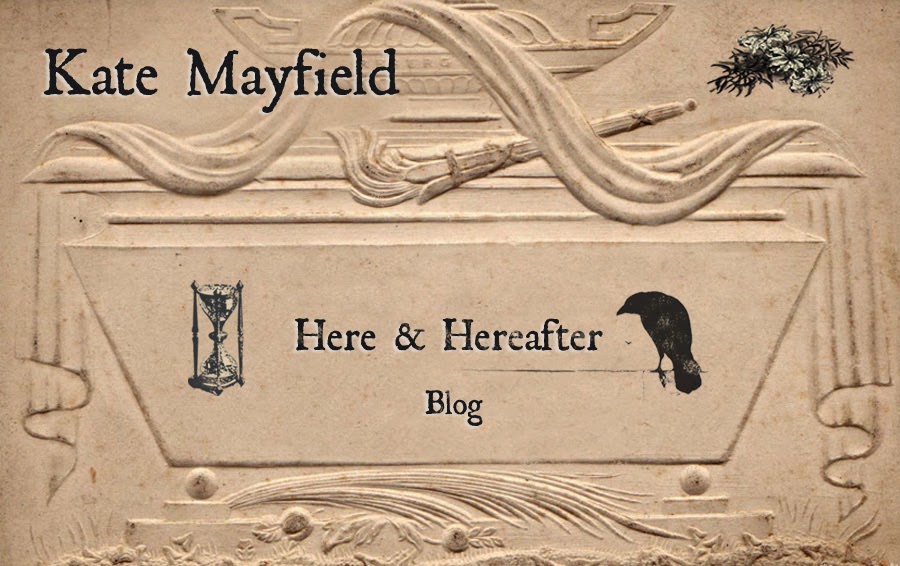“We are prepared to take pictures of a deceased person on one hour’s notice,” 19th century photographer’s advertisement
My father went through a period of filming his “work” with his 8mm camera. I grew up with the films thinking it a completely normal thing that we owned such an archive. His films of the dead in their caskets were transferred to first videotape and then DVD. My brother and I took on the project, made sure our family had a few images to remind us of our history and what our father did for a living, as if we needed one. The films never left our home and were never shown to anyone but our family. I broke that tradition when I included a few short clips on my website.
I discovered that my father’s little camera was a gentle intrusion compared to the way the photographers of the 19th century worked to memorialize the dead. While few of us would choose to pass time pouring over photos of our loved ones on their deathbeds, the Victorians welcomed a way to preserve the memory of their deceased, and especially their children at a time of high infant mortality. Their photos were never meant for the public, but were expressly made for family members for their use in their own private albums, or were given to family members and intimate friends who couldn’t travel to the home of the deceased.
The men (I have yet to discover women) behind the scenes whose task it was to photograph the dead were artists, portrait painters and photographers who created daguerreotypes that ranged from the size of a locket, up to larger stereoscopic images.
In many instances it was both the photographer’s and family’s intentions to portray the deceased as simply sleeping. As an element in the quest of a “Good Death” it was the artistic duty of the photographer to stage death as an almost beautiful state. Props, lighting and positioning were used to reveal the essence of the deceased.
What is particularly astonishing is the amount of manipulation that went into setting up the photograph. Several photographers spoke openly about their procedures. In 1843 at the top of a building in Boston, two photographers, Josiah Hawes and Albert Southworth, set up a studio under enormous skylights. Southworth and Hawes produced daguerreotype portraits of many famous people among whom were Henry Wadsworth Longfellow, Harriet Beecher Stowe and Daniel Webster.
The first two photos below are self portraits of Josiah Hawes. The third is an eerie little self portrait of Albert Southworth.



When they weren’t busy with celebrities, Southworth and Hawes, like many other studios, produced their share of post mortem photography. Southworth describes the process:
“You can bend [the corpse] till the joints are pliable, and make them assume a natural and easy position … you can carefully turn them over just as though they were under operation of an emetic. You can do that in less than one single minute, and every single thing will pass out, and you can wipe the mouth and wash off the face, and handle them just as well as though they were well persons.”
A Southworth post mortem daguerreotype:

Another daguerreotypist Gabriel Harrison describes his work:
“Gently we moved the death couch in the window in order to get the best light, though by a ray. What a face! What a picture did it reveal … The mother held up a white cloth to give me reflected light to subdue the shadows. All was still, I took the cap from the camera. About two minutes had elapsed, when a bright sun ray broke through the clouds, dashed its bright beams upon the reflector, and shedding, as it were, a supernatural light. I was startled—the mother riveted with frightful gaze, for at the same moment we beheld the muscles about the mouth of the child move, and her eyes partially open—a smile played upon her lips, a long gentle sigh heaved her bosom, and as I replaced the cap, her head fell over to one side. The mother screamed.
“She lives! she lives!” and she fell upon her knees by the side of the couch.
“No,” was my reply; “she is dead now, the web of life is broken.”
The camera was doing its work as the cord that bound the gentle being to earth snapped and loosened the spirit for another and better world. If the earth lost a flower, Heaven gained an angel.”
With that in mind, although this is not his daguerreotype, it perfectly depicts the scene.

And finally, in 1877 Charlie E. Orr wrote in the Philadelphia Photographer:
“Place the body in a lounge of sofa, have the friends dress the head and shoulders as near as in life as possible, then politely request them to leave the room to you and your aides, that you may not feel the embarrassment incumbent should they witness some little mishap liable to befall the occasion. If the room be in the northeast or northwest corner of the house, you can almost always have a window at the right and left of a corner. Granting the case to be such, roll the lounge or sofa containing the body as near into the corner as possible, raise it to a sitting position, and bolster firmly, using for a background a drab shawl or some material suited to the position, circumstance, etc. Having posed the model, we will proceed to the lighting, which, with proper care, can be done very nicely.”
* Quotations from Erin Silver’s Concordia Undergraduate Journal of Art History
